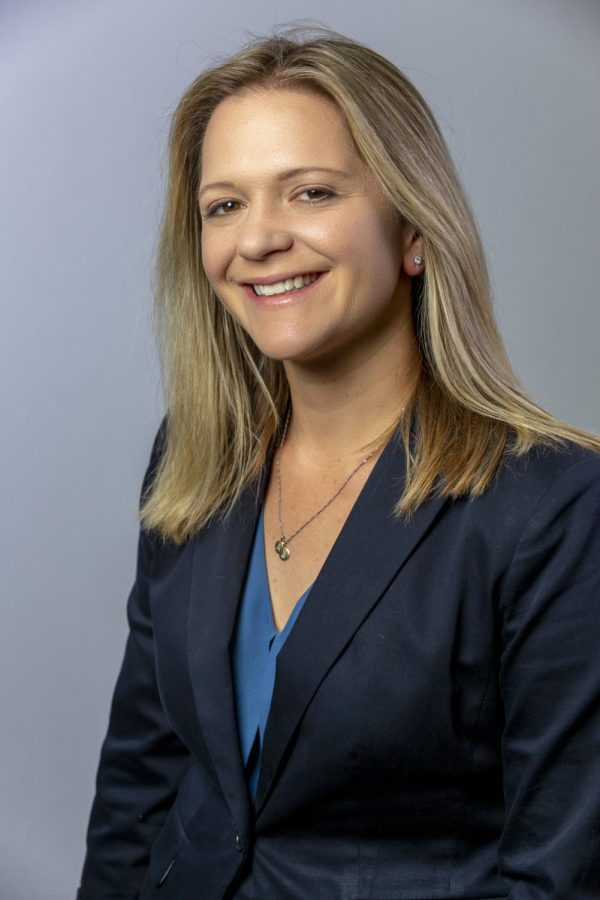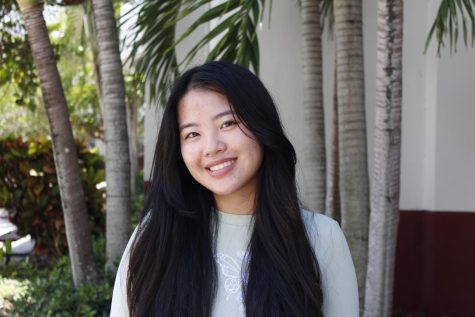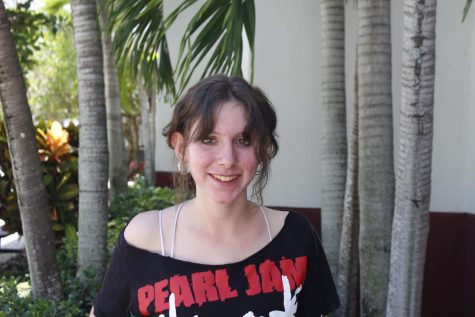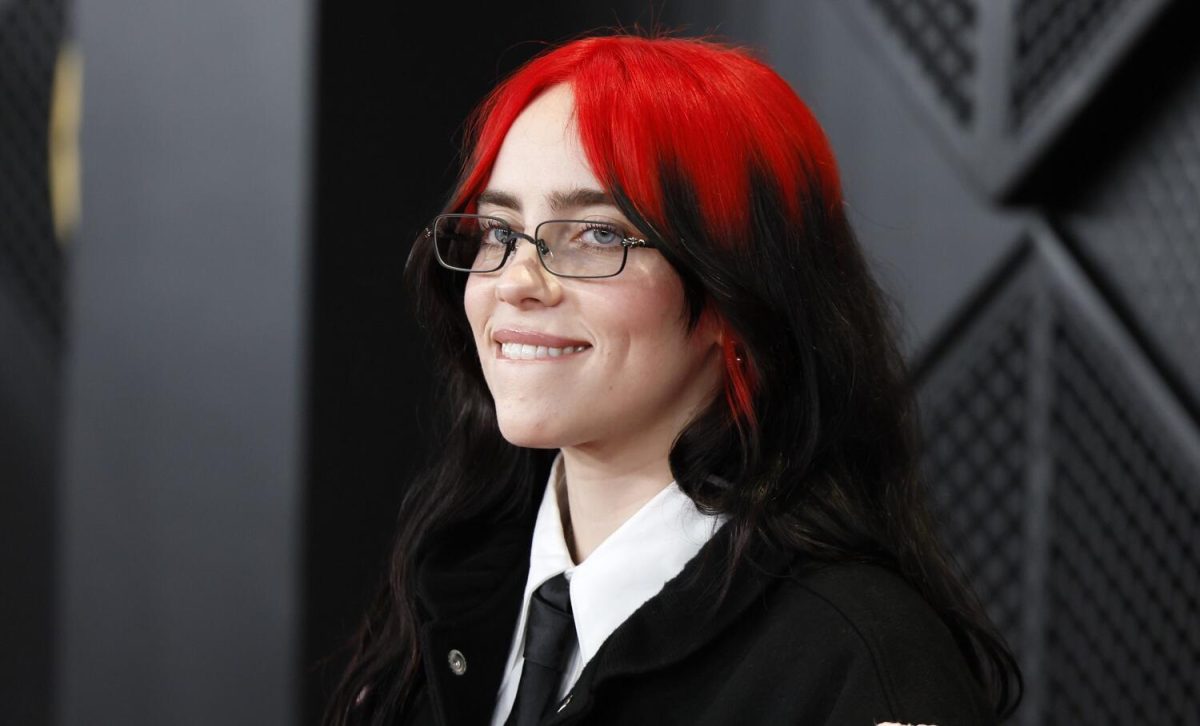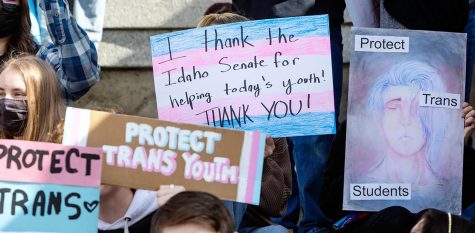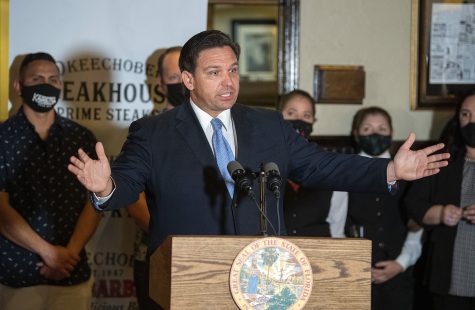Nuclear engineer Annie Kritcher combats the climate crisis through her acclaimed lab work and publications
Andrea “Annie” Kritcher is a nuclear engineer, who specializes in high-energy density plasma physics and is currently employed at the Lawrence Livermore National Laboratory in California. She served as the lead designer of the HYBRID-E experiments, which reached inertial confinement fusion ignition. Photo courtesy of Annie Kritcher
May 31, 2023
Plasma physics calculations, net fusion and laser experimentation; one woman immerses herself in the complex art of science, technology, engineering and mathematics each day. Whether it be studying how fusion energy can be used as a source of clean energy or leading socratic seminars on the collegiate level, Andrea (Annie) Kritcher applies her knowledge to initiate and lead real projects as a climate change champion.
Originally from Michigan, Kritcher had always envisioned herself becoming an engineer because of her state’s automotive engineering reputation and her love for complex mathematics. Yet, upon attending the University of Michigan where she earned her undergraduate degree, she realized engineering was primarily based on simple mathematics, whereas her interests lied in pursuing an out-of-box career that would intellectually challenge her. This revelation led her to nuclear engineering, a degree still rooted in her passions but different from that of standard engineering.
Following her education at the University of Michigan, Kritcher attended the University of California, Berkeley, where she earned her graduate degree and PhD in nuclear engineering. Ever since, she has been employed at the Lawrence Livermore National Laboratory, where she researches high-energy density plasma physics.
At the lab, Kritcher aids in conducting experiments that utilize the National Ignition Facility, the name of the largest laser in the world, to try and reach extreme plasma conditions. Her job is to run complex plasma physics calculations that set the input conditions for such experiments and in doing so, she actively works toward developing the large-scale technologies that will someday influence climate change.
Thus far, her most renowned accomplishment has been her work as lead designer of the HYBRID-E experiments, which achieved inertial confinement fusion ignition. In short, ignition is a nuclear reaction that produces more energy than it consumes and fusion is the combination of two lighter atoms to form a new, heavier one, which then releases energy.
Additionally, fusion is the process that powers stars, meaning that conditions mimicking those found at the center of the sun must be replicated in the lab for ignition to occur. Kritcher’s main role in accomplishing this, is setting up the laboratory conditions that allow for its attainment to provide a carbon-free, clean, safe and abundant source of electricity.
“I realized that I could make a contribution to fusion energy as a proton would be a potential clean, limitless source of energy someday. So the HYBRID-E experiment is a big step in that direction to someday being able to attain carbon-free energy sources,” Kritcher said.
Achieving fusion ignition is a huge milestone in reaching a means by which to obtain clean energy. Fusion, unlike fission, which is what current nuclear reactors work on, is renewable and does not produce radioactive waste or other environmental detriments. Yet, there are many more engineering advancements to be made before fusion ignition can be realized as a renewable energy source.
Currently, Kritcher and the rest of the laboratory are working with private fusion energy companies in order to begin the process of overcoming many of the obstacles that lie ahead. However, the milestone of achieving ignition and the progress that the HYBRID-E experiments have made motivate Kritcher to push forward in the face of doubt. Empowered by the knowledge that her work will one day benefit the world, she continues to make a difference every day. Thus, Kritcher “moves the needle” by testing the limits of scientific discovery through her work with nuclear testing and fusion ignition.
“I’ve been working on HYBRID-E for many years, probably six or seven years now and other designs before that. When we first started, we got good results and people that I didn’t work with, like my friends, family and people from back at home, started hearing about it,” Kritcher said.
Kritcher’s team had first seen good results as COVID-19 swept through the nation. However, as the pandemic diffused across the country, so did news of the HYBRID-E experiment’s successes. As Kritcher was flooded with words of encouragement and energized by the prospect of giving people hope during a hopeless time, she realized how important her work was, even if it would take a millenia to complete. It was this occurrence that made her realize the sheer enormity of what she was doing and the massive impact she could have in combating the climate crisis.
Further solidifying Kritcher’s dedication to protecting and maintaining the physical environment we live in are her three children.
“[People of the present] care about keeping the planet clean for our next generations, but it really hits home when you have three children and they’re gonna have children and they’re gonna have children,” Kritcher said. “I won’t even be here, but I want to maintain a clean, beautiful planet for all of the generations to come. It’s very important to me that we don’t screw it up for our kids and their kids.”
Through her climate change work, Kritcher has come to realize that what she does is no longer about solving a physics problem, but about the importance of providing clean energy. When she began her career in nuclear engineering, she had simply never anticipated the degree by which she would influence the world.
However, the HYBRID-E experiments are far from being her sole accomplishment. Kritcher has authored numerous publications in Nature and Science, became a fellow of the American Physical Society, and served as a distinguished speaker at her alma maters–in which she participates on panels regarding Hybrid Electric Vehicles and speaks about her time on the board of the National Ignition Facility Users’ Group Executive Committee.
Through her work, Kritcher hopes to provide a basis for future research, creating something that will continue to be built upon. Furthermore, Kritcher plans to mentor others working in her field and instigate a legacy of change not just in the present, but in the future.

